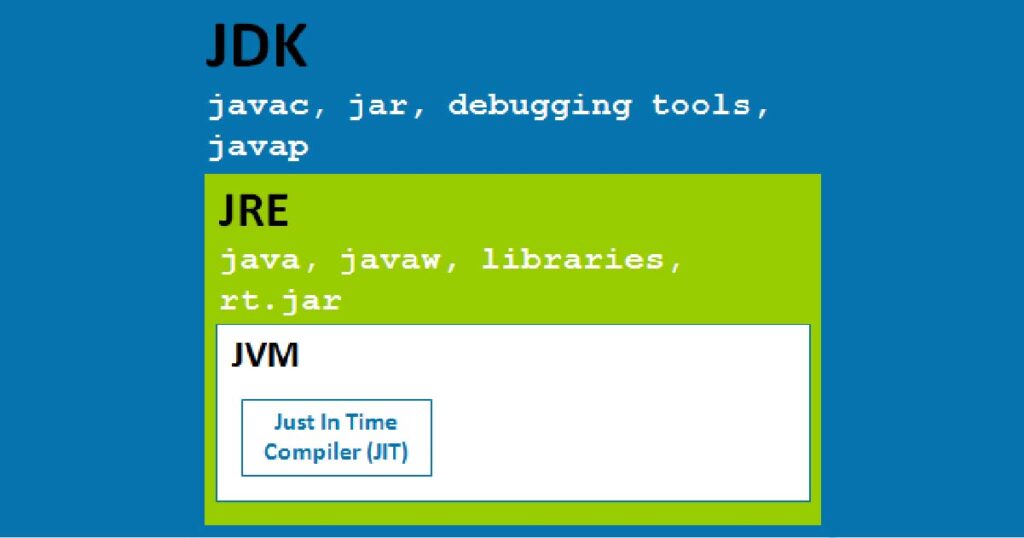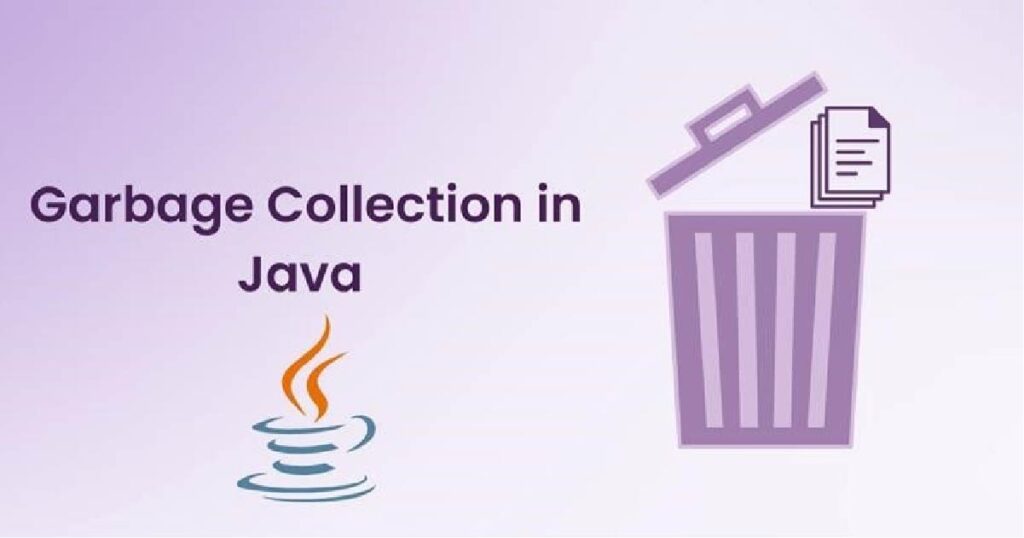Introduction
In today’s ever-changing digital landscape, Java remains an essential software tool for developers as it powers programs and applications across diverse sectors. Because of its write-once, run-anywhere paradigm, developers can produce solutions that are cross-compatible and scalable. With 5 years of experience, Java professionals have a deep understanding of its core principles and adaptability to industry needs. Because it runs on numerous devices and across sectors, the need for professionals proficient with this programming has shot up in recent times and is even expected to increase in coming years. Although demand is high, employers set a high bar for candidates, especially those with 5 years or more experience with the language. This article has therefore put together 14 of the most asked Java interview questions for 5 years experience with the language. These java interview questions for 5 years experience cover everything from core concepts to questions on testing and debugging. The java interview questions for 5 years experience in this article can help candidates to take any interview to refresh their memory, build upon their knowledge and feel more confident.
Java Interview Questions for 5 Years Experience on Core Java Concepts
- Question 1: Explain the working of the JVM (Java Virtual Machine) and its components.
This question serves as the curtain raiser for our java interview questions for 5 years experience. The Java Virtual Machine (JVM) is a crucial component in the Java ecosystem, serving as a platform-independent execution environment for Java applications. It serves as a layer of abstraction between hardware and compiled Java code, enabling programmers to write code once and have it executed on any platform that supports the Java Virtual Machine (JVM). The Class Loader, Class Area, Heap, Stack, PC Register, Native Method Stack, Execution Engine, and Native Interface are some of the essential parts of the JVM. While the Class Area holds class-level data, static variables, and constant pools, the Class Loader loads compiled Java classes into memory. While Stack holds local variables and partially completed results, Heap allocates objects created during the execution of Java programs. In addition, the JVM optimizes code execution according to runtime parameters. It is imperative that Java developers, particularly those with five years of experience, comprehend JVM and all of its components.
- Question 2: Discuss the differences between JDK, JRE, and JVM.

Three crucial parts of the Java platform—the Java Development Kit (JDK), Java Runtime Environment (JRE), and Java Virtual Machine (JVM)—play different roles in the creation and operation of Java applications. Java bytecode is interpreted by the JVM, an abstract virtual machine, which allows Java programs to run on a variety of platforms without needing to be modified. The JVM, libraries, and extra resources are runtime components required for running Java applications, and JRE is a subset of the JDK. The JRE and other development tools needed to create Java applications are included in the JDK, which is a complete development kit. The choice of which to use depends on the role: end-users typically need the JRE to run Java applications, while developers use the JDK for active Java application development.
- Question 3: How does garbage collection work in Java?

This is one of the most asked java interview questions for 5 years experience. Garbage collection is a crucial part of Java's memory management, automating the process of reclaiming memory occupied by unreachable objects. It makes use of the Mark and Sweep algorithm, which moves across the object graph marking objects that are within reach in order to create a live object set. After that, the garbage collector goes through the heap and clears memory for upcoming allocations. A generational approach is also used by Java's garbage collector, which divides objects into groups according to their age. Because most objects have short lifespans, this method is effective in lessening the burden on the garbage collector. Objects that can be accessed or traced from garbage collection roots can be reached without having to pass through other objects. Java uses several garbage collection implementations, such as ZGC, Garbage-First, Parallel, and Serial. To optimize memory management based on application requirements, garbage collection performance can be tuned and monitored.
Java Interview Questions for 5 Years Experience on Advanced Java Features
- Question 4: What are the key features introduced in Java's recent versions (Java 14 onwards)?
Java, a programming language, is constantly evolving with new versions introducing enhancements and improvements. Updates that have been made include the removal of the Nashorn JavaScript Engine, improved pseudo-random number generators, Unix domain socket channels, Vector API, helpful NullPointerExceptions, switch expressions, ZGC (Garbage Collector) enhancements, support for EdDSA, and reimplementation of the Legacy DatagramSocket API. Java 17 deprecates the Security Manager in preparation for its removal, adds sealed classes, and keeps improving the Vector API. The performance, readability of the code, and developer productivity are all intended to be enhanced by these features.
- Question 5: Explain the concept and usage of Streams in Java.

java interview questions for 5 years experience like this is no surprise as it dwells on advanced features. Introduced in Java 8, the Stream API in Java offers a useful way to work with collections. Streams represent sequences of elements and support various operations to perform computations on those elements. They can have their elements transformed through a series of operations because of their pipelined design. Streams can be handled concurrently or sequentially, taking advantage of multi-core processors' capabilities for simultaneous execution. They are unchangeable data that generate a fresh stream that displays the computation's outcome. Because stream operations are lazy, resources can be used more effectively. Streams can be created from various data sources, including collections, arrays, I/O channels, and generator functions. The overall elegance and efficiency of Java code is enhanced by the ability of developers to create parallelizable and efficient data processing pipelines through the combination of intermediate and terminal operations.
- Question 6: Describe the Java Memory Model and its significance.
Another of the frequently asked java interview questions for 5 years experience is this. The Java Memory Model (JMM) is a crucial aspect of Java programming that defines the rules and behaviors governing thread interactions through memory. It aims to ensure proper synchronization and consistency in multi-threaded Java programs. Shared memory, ordering, atomicity, visibility, thread safety, synchronization, happens-before relationships, volatile keywords, and memory barriers are some of the fundamental ideas. Different threads can read and update shared variables in a consistent and predictable manner thanks to shared memory. In order to prevent data corruption from incomplete updates, the JMM also ensures atomicity for specific operations, such as reads and writes of long and double variables. The JMM defines ordering, which is necessary to write accurate and productive multi-threaded programs. The volatile keyword, which ensures visibility of changes across threads and particular ordering guarantees for reads and writes, is also introduced by the JMM. Memory barriers stop the compiler or hardware from reordering by enforcing ordering constraints on memory operations.
Java Interview Questions for 5 Years Experience on Java Frameworks and Libraries
- Question 7: Discuss the Spring Framework and its advantages in modern Java applications.
One well-known and significant Java framework that encourages best practices and streamlines Java development is the Spring Framework. Aspect-Oriented Programming (AOP), Data Access, Transaction Management, Model-View-Controller (MVC), Security, Dependency Injection (DI), and Simplified Configuration are some of its essential components. Declarative boundaries facilitate transaction management while the Spring Data module streamlines data access. Web application architecture is made flexible and customizable by the MVC framework, and security takes care of authorization, authentication, and defense against known vulnerabilities. A design pattern called dependency injection (DI) makes code more testable and maintainable. Simplified configuration, modularity, testability, loose coupling, enterprise integration, community support, and continuous evolution are some of the benefits of the Spring Framework. Because modern Java applications need to be robust, flexible, and easy to maintain, developers and organizations continue to find the Spring Framework to be an essential tool.
- Question 8: How do you implement microservices in Java, and what tools do you use?
Java interview questions for 5 years experience is not complete without a question like this. This helps employers gauge the level of experience of the candidate. Breaking down a monolithic application into smaller, independent services that communicate via well-defined APIs is known as microservices in Java. Common tools and frameworks in the Java ecosystem facilitate the development, deployment, and management of microservices. A popular framework for creating microservices, Spring Boot provides configuration conventions and defaults. Request routing, rate limitation, authorization, and authentication are all handled by API gateways. Services can communicate dynamically with one another thanks to service discovery tools like Netflix Eureka and Consul. Deploying services in a lightweight environment is made possible by containerization and orchestration, frequently with Docker. Decoupled communication between services is made possible by message brokers such as RabbitMQ and Apache Kafka. Building, testing, and deploying microservices are automated with the help of continuous integration/continuous deployment (CI/CD) pipelines. Circuit breakers and resilience are used to manage and recover from failures gently.
- Question 9: Explain the role of Hibernate in Java and its advantages over traditional JDBC.
Next on our java interview questions for 5 years experience list is this. A popular object-relational mapping (ORM) framework for Java, Hibernate connects relational databases and the object-oriented programming paradigm of Java. With the help of Hibernate's database-independent abstraction layer, programmers can create code that is independent of databases and makes it simple to move applications between various relational database management systems (RDBMS). Additionally, it supports automatic table generation, which frees developers from the need to explicitly create database tables in order to define the data model using Java entities (POJOs). Hibernate optimizes performance by preventing pointless data retrieval. It supports both eager and lazy loading. Developers can express database queries in terms of Java objects using its Query Language (HQL), which offers a more readable and natural syntax. Compared to traditional JDBC, Hibernate offers more productivity, database independence, automatic table creation, and an object-oriented approach to data manipulation that is more natural.
Java Interview Questions for 5 Years Experience Design Patterns and Best Practices
- Question 10: What are some common design patterns used in Java?
Java interview questions for 5 years experience on design patterns is to be expected. Design patterns are recurring solutions to common problems in software development, providing proven solutions and promoting best practices. Many design patterns are frequently applied in Java to handle different issues. The Factory Method Pattern, which defines an interface for creating an object but leaves the choice of its type to the subclasses, the Abstract Factory Pattern, which provides an interface for creating families of related or dependent objects without specifying their concrete classes, the Builder Pattern, which separates the construction of a complex object from its representation, and the Decorator Pattern, which dynamically attaches additional responsibilities to an object, are some of the most popular, and widely used design patterns.
- Question 11: Discuss best practices in error handling in Java.
Best practices in error handling in Java is one of the crucial areas for setting java interview questions for 5 years experience. Error handling is crucial for creating robust and maintainable Java applications. The use of exception handling sparingly, the use of specific exception types, the avoidance of catchables, the logging of exceptions, the distinction between checked and unchecked exceptions, the definition of custom exceptions for particular error conditions, the appropriate handling of exceptions, the use of try-with-resources for resource management, the implementation of graceful degradation, failing quickly, and unit testing for exception scenarios are some examples of best practices. Exception handling ought to be used sparingly and saved for unusual or unexpected errors. Tailored exception types facilitate accurate error diagnosis and focused intervention. It is not recommended to catch throwables unless there is a clear need to identify and address errors at a high level. Custom exceptions can add more context and improve the expressiveness of the code. The answer to this java interview questions for 5 years experience can flow along this line.
- Question 12: How do you ensure code quality and performance in Java?
Java software development requires a focus on code quality and performance. Code reviews, coding standards, unit testing, integration testing, continuous integration (CI), static code analysis, refactoring, performance profiling, monitoring, caching, concurrency management, database optimization, memory management, scalability, and benchmarking are essential for ensuring reliable, maintainable, and efficient software. While integration testing validates the relationships between various components, unit testing confirms the accuracy of each component separately. Pipelines for continuous integration (CI) automate the procedure and offer preliminary comments on the quality of the code. Code readability, maintainability, and structure are all improved by regular refactoring. Code readability, maintainability, and structure are all improved by regular refactoring.
Java Interview Questions for 5 Years Experience on Testing and Debugging in Java
- Question 13: What are the best practices for unit testing in Java?
Writing testable code, testing one item at a time, adhering to the Arrange-Act-Assert pattern, using descriptive test method names, maintaining test coverage, regularly refactoring tests, understanding testing framework features, using parameterized tests for data variables, keeping tests independent, using assertions sparingly, running tests frequently, isolating external dependencies, and providing test data carefully are all best practices for effective unit testing in Java. More best practices include entails utilizing the proper assertion techniques that testing frameworks offer, making sure that tests cover a variety of scenarios, keeping high test coverage, refactoring tests frequently, being aware of the features of testing frameworks, using parameterized tests for data variables, recording test intentions, and swiftly resolving flaky tests.
- Question 14: How do you approach debugging in a complex Java application?
The last but not the least java interview questions for 5 years experience on our list is this. Debugging a complex Java application can be a challenging task, but with the right approach and tools, it becomes manageable. To approach debugging, first understand the system, reproduce the issue, use logging, isolate the issue, review recent changes, check external dependencies, use profiling tools, involve team members in code reviews, break down the problem into smaller parts, run unit tests, use print statements sparingly, consider time travel debugging, document the debugging process, know when to seek help, perform regression testing, and learn and improve.
Understanding the system, reproducing the issue, using logging, using debugging tools like IntelliJ IDEA, Eclipse, and NetBeans, and using remote debugging are essential steps in debugging a complex Java application. Check logs and stack traces, use exception breakpoints, isolate the issue, review recent changes, check external dependencies, use profiling tools, consider code reviews, break down the problem into manageable parts, run unit tests, use print statements sparingly, consider time travel debugging, and document the debugging process.
Conclusion
These java interview questions for 5 years experience showcase the breadth of knowledge and expertise as well candidates' continuous education in the Java ecosystem. Building upon them allows professionals to contribute valuable insights to the changing digital landscape. Not only do the java interview questions for 5 years experience serve as assessment tool for candidates, but it also serves as a tool for continuous education and proof of dedication to the Java universe.



